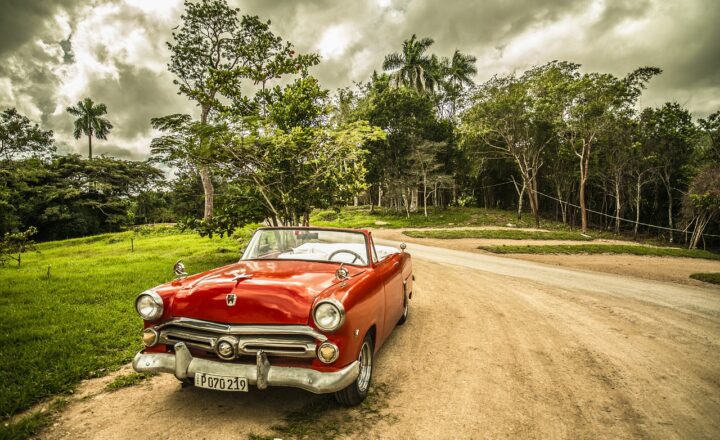Road Warriors: The Most Iconic Cars That Defined the 70s and 80s
November 19, 2024

The 1970s and 1980s were pivotal decades for the automotive industry, marked by remarkable innovation, cultural shifts, and the birth of an array of cars that would leave a lasting impact. From muscle cars that roared on the highways to compact cars that set the standard for fuel efficiency, these decades saw vehicles that became symbols of their time. Join us as we take a trip down memory lane to explore some of the most iconic cars from the 70s and 80s, and understand what made them so special.
1. Ford Mustang (1964-Present)
Though it was first unveiled in 1964, the Ford Mustang evolved significantly through the 70s and 80s, solidifying its status as an American icon. The Mustang in the early 70s saw a shift towards more emission regulations, resulting in more fuel-efficient engines, such as the 302 V8. However, despite these changes, the Mustang retained its sporty appeal, making it popular among car enthusiasts.
In the 80s, the Mustang faced competition from the rising Japanese automakers, which pushed Ford to innovate further with the introduction of the Mustang SVO, injecting more horsepower and modernized handling into the classic formula. The Mustang remained a symbol of freedom and youthful exuberance, as its catchy slogan stated: ‘Have you driven a Ford lately?’
2. Chevrolet Camaro (1966-Present)
The Chevrolet Camaro first hit the streets in 1966 but saw significant popularity in the 70s and 80s. This muscle car rivaled the Ford Mustang and quickly became known for its aggressive styling and array of power-drenched engine options. The 1976 Camaro featured a redesign that modernized its looks for the decade while keeping performance at the forefront.
By the mid-80s, the Camaro came with improved performance through the introduction of the Z28 model. With its emphasis on sporty handling and powerful engines, such as the 5.0L V8, the Camaro captured the thrill of driving, becoming a favorite for those seeking excitement on and off the track.
3. Volkswagen Rabbit/GTI (1974-Present)
When the Volkswagen Rabbit made its debut in the 70s, it brought with it a new era of compact cars that prioritized efficiency without sacrificing fun. The small hatchback quickly became popular thanks to its nimbleness and affordability, appealing to young drivers and those looking for practicality.
In 1983, the introduction of the Golf GTI turbocharged its image, merging performance with practicality. The GTI became known as the ‘hot hatch,’ beloved for its sporty handling and spirited driving dynamics. This innovative approach to the compact car market set the benchmark for future small cars, which continue to evolve today.
4. Pontiac Trans Am (1969-2002)
The Pontiac Trans Am emerged as a star in the muscle car realm during the 70s and 80s, largely thanks to its fierce presence in the pop culture landscape, particularly in films such as ‘Smokey and the Bandit.’ Known for its streamlined design and aggressive styling, the Trans Am was a testament to Pontiac’s performance aspirations.
Equipped with roaring V8 engines, the 70s saw the Trans Am unyieldingly embody the muscle car spirit. The introduction of the Pontiac Firebird Trans Am in the late 70s further cemented its status, making it a perennial symbol of American performance and style.
5. Datsun 240Z (1969-1978)
The Datsun 240Z introduced American consumers to the allure of Japanese sports cars. Launched in the late 60s and continuing its legacy into the 70s, the 240Z combined sleek styling with impressive performance and affordability. Its inline-six engine offered a sporty driving experience without the hefty price tag, making it appealing to a wide audience.
The 240Z not only became a beloved sports car but also helped establish Datsun, later known as Nissan, as a serious player in the North American market. Its legacy paved the way for future Z-cars, spawning a lineage of unforgettable sports vehicles.
6. Chrysler K-Car (1981-1989)
Amid the oil crises and changing consumer preferences of the early 80s, the Chrysler K-Car emerged as a pivotal model that helped save Chrysler from financial ruin. This compact car offered affordability, practicality, and fuel efficiency, effectively catering to a market under pressure from rising fuel prices.
With a simple, boxy design and a range of options, the K-Car became a sales success, allowing Chrysler to rebound from its difficulties. It spawned various derivatives, including the Dodge Aries and Plymouth Reliant, forming the backbone of Chrysler’s fleet during a transformative period in the auto industry.
7. BMW 3 Series (1975-Present)
The BMW 3 Series was introduced in 1975 and quickly gained recognition for its blend of performance, luxury, and practicality. This compact executive car embodied BMW’s ‘Ultimate Driving Machine’ slogan, providing drivers with an exhilarating experience that appealed to enthusiasts and working professionals alike.
Throughout the 70s and 80s, the 3 Series was constantly refined, introducing advancements in technology and design while retaining its sporty character. It became a benchmark within the luxury compact car segment and significantly contributed to BMW’s rise as a leading global luxury automaker.
Conclusion
The 70s and 80s were transformative decades for the automotive industry, paving the way for innovation, design, and a shift in consumer preferences. From powerful muscle cars to practical compact vehicles, each iconic model left an indelible mark, becoming a symbol of an era filled with change.
These vehicles did not just transport people—they captured dreams, aspirations, and a sense of freedom as they roamed the highways. As we look back on these road warriors, their legacy continues to influence new generations of car enthusiasts.








